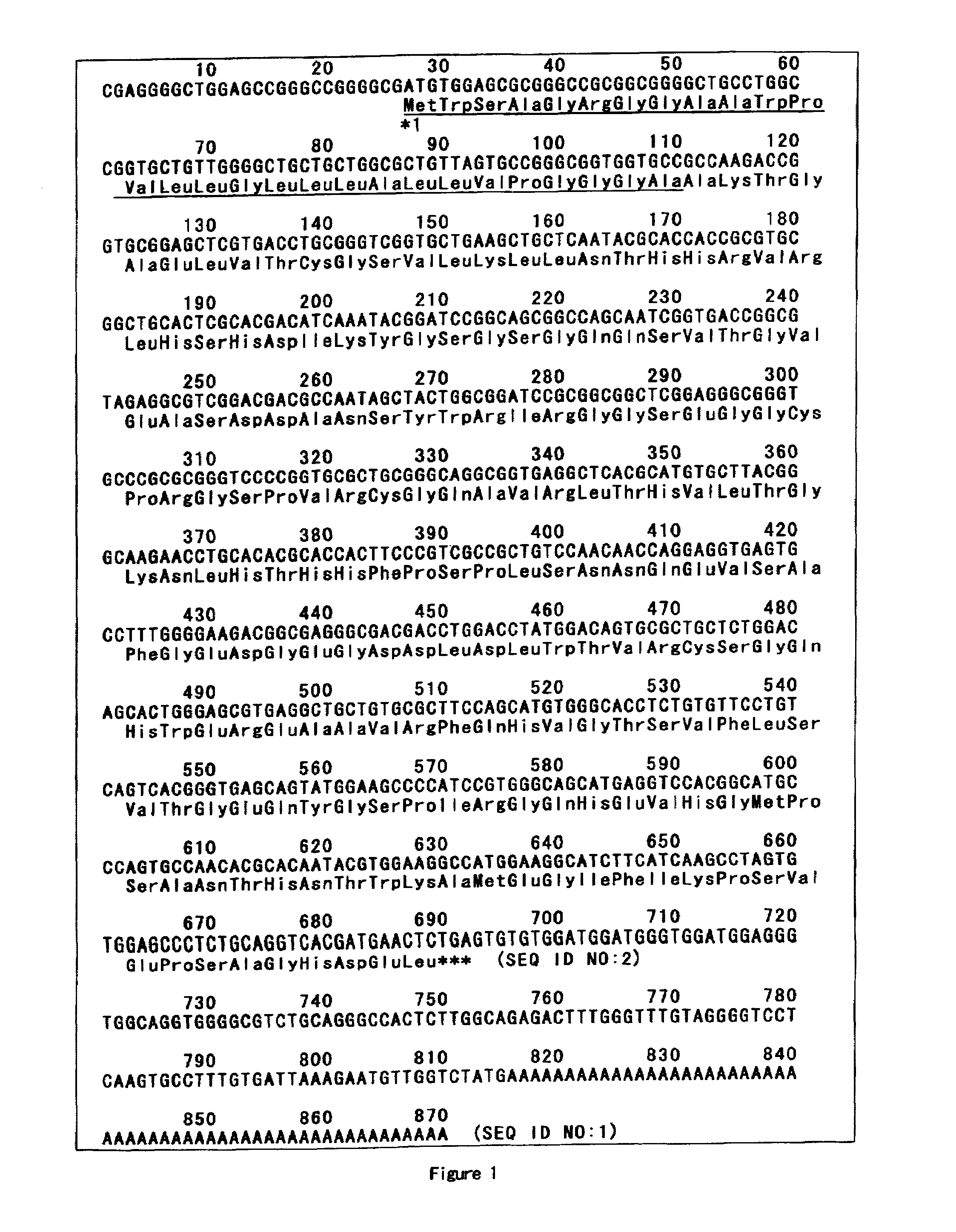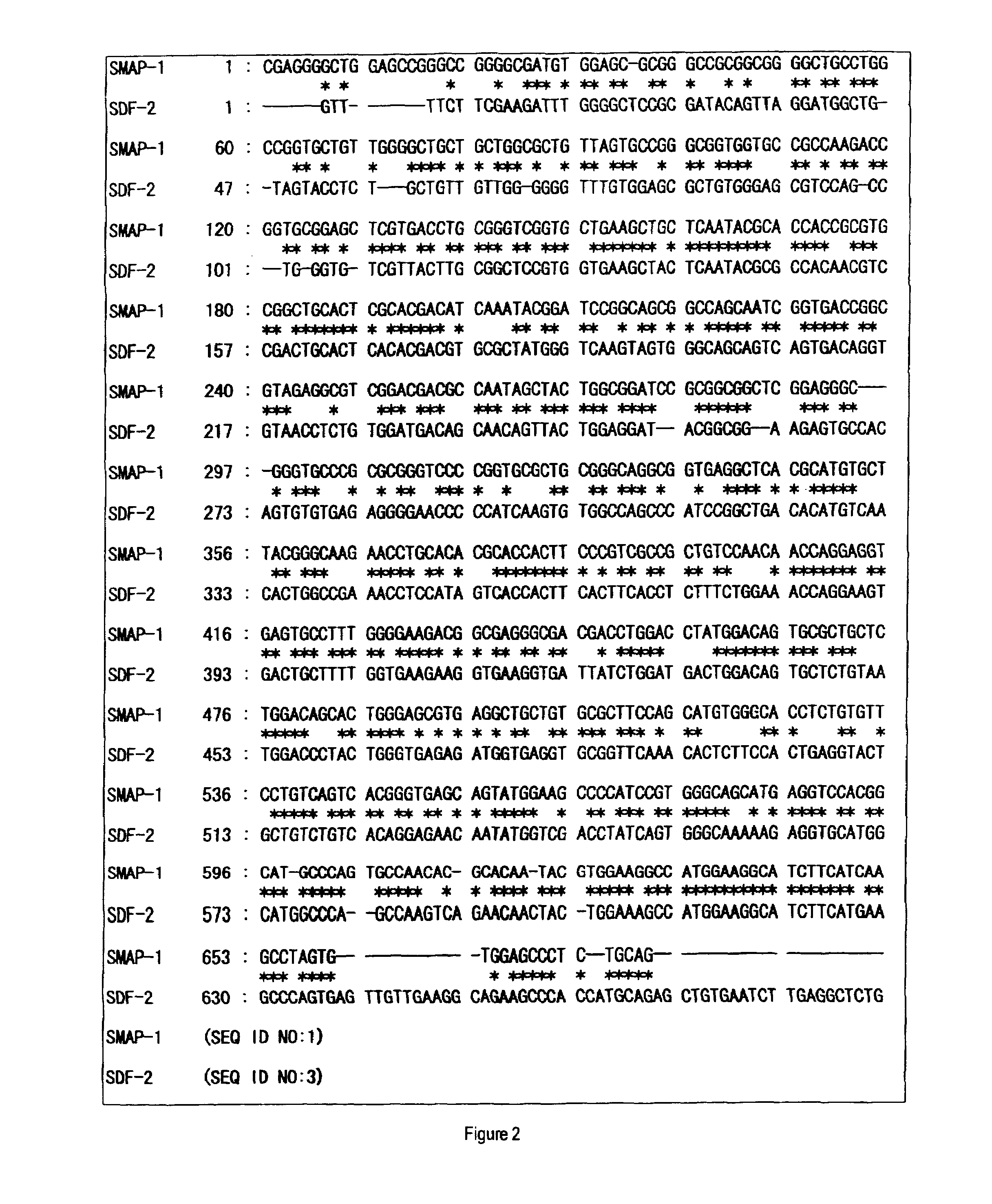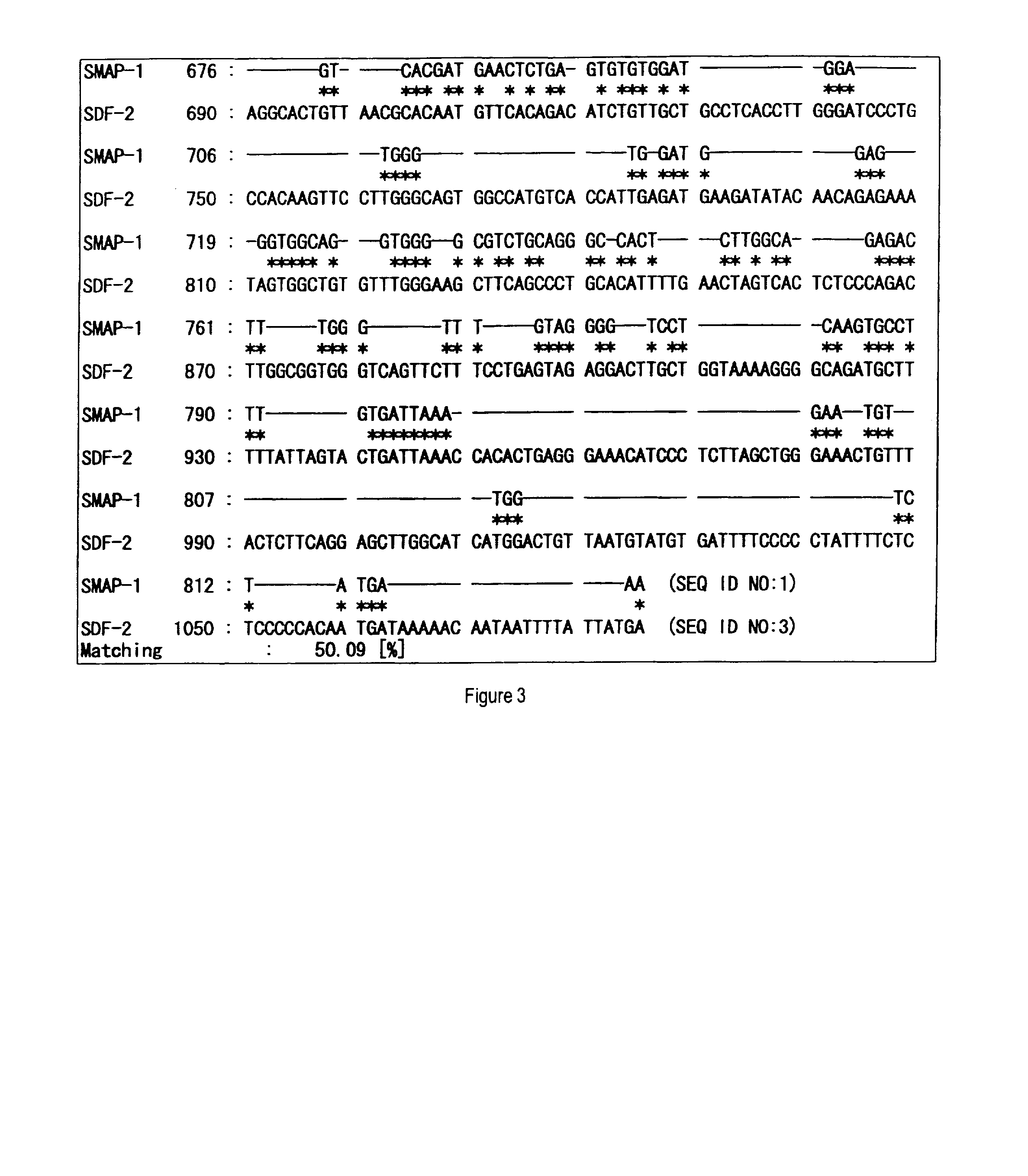Mannosyltransferase polypeptides and polynucleotides encoding them and methods for making and using them
a technology of mannosyltransferase and polynucleotides, applied in the field of new protein, to achieve the effect of increasing durability and/or membrane permeability
- Summary
- Abstract
- Description
- Claims
- Application Information
AI Technical Summary
Benefits of technology
Problems solved by technology
Method used
Image
Examples
example 1
Preparation of Human Fetal Liver cDNA Library
[0149]Human fetal liver cDNA library was prepared by synthesizing cDNA from human fetal liver polyA+. mRNA (Clontech) and inserting them into TMT expression vector pTMT-shPM1-kappa. The cDNA library was prepared using cDNA synthesis kit (STRATAGENE) basically according to the protocol attached to the kit from STRATAGENE, with the following modifications. Superscript II from GIBCO-BRL was used as the reverse transcriptase. A HindIII-SmaI adapter from Takara was used as the adopter that was attached to the 5′-end of cDNA. An improved oligo dT primer was used for the first strand cDNA synthesis. The primer sequence is shown in SEQ ID NO: 3. Specifically, the synthesized cDNA was inserted at the HindIII / BamHI site in the sense orientation into the TMT expression vector using the oligo dT primer to which a BamHI site was added. Further, a termination codon was inserted in three frames immediately upstream of the TTT . . . TTT sequence of the o...
example 2
Screening of the Human Fetal Liver cDNA Library Using the TMT Method
(1) Introduction of Genes into COS-7 Cells (First Round)
[0152]Four microgram of each of the plasmid DNAs prepared from the respective pools (pool Nos: 1–5) was used for transfecting COS-7 cells using FuGENE™6 (Boehringer-Mannheim).
[0153]Specifically, a day before transfection, COS-7 cells were plated in three 100-mm dishes (Falcon; 3003) at a cell density of 1×106 cells / dish. The cells were cultured overnight in 10 ml DMEM medium (GIBCO-BRL) containing 10% fetal calf serum at 37° C. under 5% CO2. On the day of transfection, 12 μl of FuGENE™6 was added to 0.2 ml of serum-free DMEM medium and was incubated at room temperature for 5 minutes, and 4 μg plasmid DNA was mixed thereto followed by incubation at room temperature for 15 min. The mixture was added to the above-mentioned COS-7 cells. The cells were cultured at 37° C. under 5% CO2 for three days.
(2) Preparation of Panning Dish
[0154]Panning dishes coated with goat...
example 3
Analysis of the Nucleotide Sequence of Clone HFL0304h Isolated by the TMT Method and the Deduced Amino Acid Sequence Thereof
[0160]After panning for the third time, colonies were randomly chosen from the plate for titer check from pool No. 5, cultured in 2 ml of liquid medium of LB-ampicillin (100 μg / ml) at 37° C., and the plasmid DNAs were prepared. Then, clones containing the appropriate insert sequence of interest were selected by an analysis using restriction enzymes, SmaI and BamHI, to determine the nucleotide sequences from the 5′-end sequence.
[0161]The obtained nucleotide sequences and the deduced amino acid sequences thereof were subjected to database search (BLAST-N and BLAST-P) in public databases (GenBank and SWISSPROT) to narrow the list of candidate sequences with novelty. In addition, the obtained amino acid sequences were analyzed to possess transmembrane domains by analysis software SOSUI. SOSUI is a computer program to predict transmembrane domains from protein prima...
PUM
| Property | Measurement | Unit |
|---|---|---|
| Length | aaaaa | aaaaa |
Abstract
Description
Claims
Application Information
 Login to View More
Login to View More - R&D
- Intellectual Property
- Life Sciences
- Materials
- Tech Scout
- Unparalleled Data Quality
- Higher Quality Content
- 60% Fewer Hallucinations
Browse by: Latest US Patents, China's latest patents, Technical Efficacy Thesaurus, Application Domain, Technology Topic, Popular Technical Reports.
© 2025 PatSnap. All rights reserved.Legal|Privacy policy|Modern Slavery Act Transparency Statement|Sitemap|About US| Contact US: help@patsnap.com



